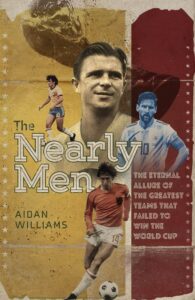 Back in 1992 FIFA introduced their rankings to establish who the best teams in the world were and of course once that list was created, there had to be logically a nation that sat at the bottom of it and with it the label of ‘the worst team in the world’.
Back in 1992 FIFA introduced their rankings to establish who the best teams in the world were and of course once that list was created, there had to be logically a nation that sat at the bottom of it and with it the label of ‘the worst team in the world’.
Since the introduction of the rankings many in the football world have questioned the validity of them due to the system used by FIFA in working out the points awarded to teams, an algorithm based on the opposition, competition and previous year’s records.
Nevertheless, author Aidan Williams defends the list:
It is, of course, impossible to know for sure which of several nations – who are unlikely to ever face other – happens to be the worst…Is a European micro-nation, who only ever faces other European teams of considerably greater population and resources than itself, a worse team than a Caribbean nation who only plays every four years and loses to a neighbouring speck in the action? Nobody can say for sure, but without the possibility of such nations regularly facing each other, the rankings are the best means available.
However, the idea of the book in looking at the minnows of the world game is a great idea and it must be said that Williams has done an incredible amount of research in bringing the reader stories from across the globe including amongst others, American Samoa, Bhutan, East Timor, Guam, Montserrat, San Marino and the Turks & Caicos Islands.
There are some great human stories such of that of Nicky Salapu the American Samoan goalkeeper who conceded 31 goals in a World Cup qualifying match on 11 April 2001 against Australia, included in the nine chapters.
What is also presented in the book is one of the reasons why former FIFA President Sepp Blatter had such support amongst the smaller nations, that being the financial aid and grants that these soccer outposts received from football’s world governing body.
Having said that the research is one of the strengths of the book, it also contributes to a slight weakness, in that in some areas the vast array of quotes seemed stitched together meaning that there are passages which lack a natural flow, colour and vibrancy.
What also might have been a useful addition to the book would have been an appendix which showed which teams had been at the bottom of the rankings since 1992 and the time they spent in that position.
These are though minor criticisms of a book which provides an insight into the realities of a football world a million miles away from the European and South American giants of the global game.
 The Nearly Men tells the fascinating stories of some of the most revered international football teams of all time.
The Nearly Men tells the fascinating stories of some of the most revered international football teams of all time.